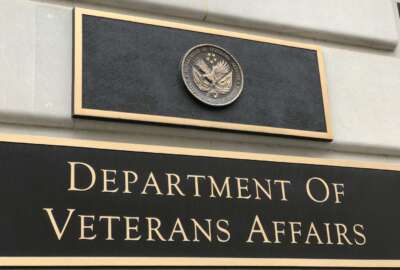DoD furlough decision driven by readiness concerns
Roughly 680,000 DoD civilians will be forced to take one day off per week without pay between July 8 and the end of the fiscal year as a result of the automatic...
wfedstaff | April 17, 2015 5:02 pm
By Michael O’Connell
and Jack Moore
Furlough notices are on the way for thousands of civilian employees all across the Defense Department.
Roughly 680,000 DoD civilians will be forced to take one day off per week without pay between July 8 and the end of the fiscal year as a result of the automatic budget cuts, known as sequestration.
Jessica Wright, acting undersecretary of Defense for Personnel and Readiness, told In Depth with Francis Rose the decision wasn’t an easy one.

“Our DoD civilians are really worth their weight in gold, and this was a monumentally hard decision for all of us to make,” Wright said.
Between May 28 and June 5, DoD is sending out furlough proposal notices. After that, employees have approximately seven days to respond and appeal their furlough status. There will then be a waiting period of 30 days, from June 5 to July 5, with furloughs beginning in earnest on July 8, Wright said.
Approximately 115,000 DoD employees — about 15 percent of DoD’s civilian workforce — will be excepted from the furloughs. Those will include individuals involved in safety of life, civilians in combat zones, Wounded Warrior care, mental heath and those working on sexual assault prevention.
“But if there is an individual that feels like they should be excepted for a reason, they can present that case to the deciding official,” Wright said. “And the deciding official will take all of that into consideration when they make their final decision.”
Deciding which employees would be furloughed — and which would be excepted — boiled down to one thing, Wright said.
“Readiness drove the furlough decision,” Wright said. “So, for every dollar that we use from a furlough, we can benefit the readiness in our mission capability and that’s DoD’s mission. So, the fact of the matter is the furloughs will happen. We are looking clearly at whether or not we can work through a decision to limit it, but we right now have decided that 11 furlough days are what we need to do within the DoD network.”
Earlier in the sequestration discussions, some DoD components said they could move money around and possibly avoid furloughs altogether. But in the end, DoD decided the 11 furlough days were the best way to achieve its mission.
“Readiness is not a service-oriented issue, it is a collective DoD collaborative issue that we need to jointly have readiness across the board with the services,” Wright said. “And so, it was a decision made by the leadership that this would be the whole of DoD furloughed.”
Language of the furlough notices
Federal News Radio obtained copies of two DoD furlough notices, one sent to a civilian employee in the Marine Corps and another to a Navy civilian employee. The language in both is nearly identical. Where the notices differ are in the directions of whom the employee needs to contact in order to appeal his or her furlough decision.
The first part of the notice explains the reason why DoD decided to furlough some employees.
This administrative furlough is necessitated by the extraordinary and serious budgetary challenges facing the Department of Defense (DoD) for the remainder of Fiscal Year (FY) 2013, the most serious of which is the sequester that began on March 1, 2013. The Budget Control Act of 2011, as amended by the American Taxpayer Relief Act of 2012, makes across-the-board reductions to budgetary resources for the Federal government. In addition, the DoD must and will protect wartime operations funding for our troops in harm’s way. This inevitably means larger cuts in base-budget funding for Operation and Maintenance (O&M) accounts. Thus, the DoD will need funding in other accounts that can be used to provide warfighters with what they need to protect national security and fight the war.
The notices go on to describe the scope of the furloughs, which will run from July 8 to Sept. 21. Full-time employees will be furloughed 11 workdays. Furloughs for part-time employees will be prorated based on each individual’s work schedule.
While the number of furlough hours each employee must take during different pay periods will vary, employees will be notified in advance of how many hours they will be required to take during each pay period. “Generally, you will not be furloughed for more than 16 hours for each pay period,” the notices say.
Employees will be able to request a specific schedule for their furlough days.
Employees will also be placed on non-pay status for annual, sick, court and military leave or approved leave without pay if those days are later determined to be furlough days. Employees can also reschedule furlough time off provided it meets mission and workload considerations and is approved by management.
The notices also state the furlough is “a non-disciplinary adverse action.”
Although DoD has decided on 11 furlough days, the notices contain a provision allowing for additional furlough days if the agency decides they are necessary. Employees will receive written notice if those days are needed.
Sept. 30 and beyond
Looking ahead to Fiscal Year 2014, Wright acknowledged that with the budget numbers suggested by the White House and both sides in Congress, DoD may very well have to plan for another round of sequestration and furloughs after FY 2013 ends on Sept. 30.
“It is on my mind and it is on all of our minds,” Wright said. “We are working through a strategic choices management review where we understand where we can look at the budget across the board. But frankly right now, no decisions have been made. We’re giving it a lot of thoughtful discussion and deliberation to come up with some good solid courses of action.”
One group of employees not excepted from the current round of furloughs are teachers within the DoD education system.
Adrian Talley, the principal deputy director and associate director for Education Department of Defense Education Activity (DoDEA), appeared May 8 on In Depth and expressed concerns that furloughing teachers would impact students’ in-class time. He suggested that teachers be furloughed on a rotating basis so that students would receive their necessary classroom hours.
Wright said ensuring students received the necessary classroom time was a priority.
“We made a conscious decision that our education for our children is paramount and that they must get an accredited school year,” she said. “Because that is so important to us, we have worked with director of DoDEA, Marilee Fitzgerald, and we talked to her about the necessity of furloughs within the DoDEA school system and about what we can do to kind of strike a balance.”
As a result of this discussion, DoD and DoDEA came up with five furlough days for educators. The superintendents of the school systems will determine what those days will be at the start of the next school year. “With five school days, the children will still get a qualifying, accredited school year, which is our going- in proposition,” Wright said.
The top five states affected by the current round of furloughs are Texas, California, Virginia, Maryland and Georgia.
“A lot of people think the DoD civilians work within the National Capitol Region or Washington, D.C., but frankly about 85 percent work outside of that region,” Wright said. “That’s what’s important. This will affect us countrywide.”
RELATED STORIES:
Hagel makes ‘difficult choice,’ civilian furloughs to begin July 8
Sequestration already biting Navy, Marines readiness
Copyright © 2024 Federal News Network. All rights reserved. This website is not intended for users located within the European Economic Area.





